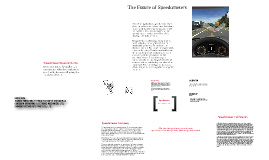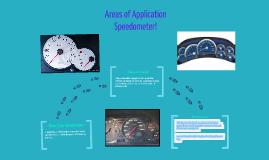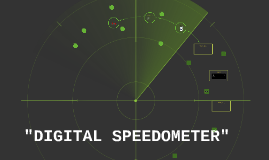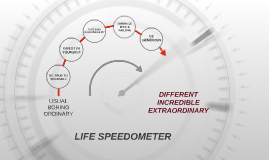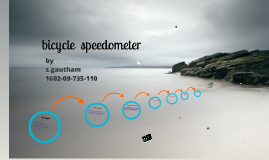Speedometer
Transcript: *The job of the speedometer is to indicate the speed of your car in miles per hour, kilometers per hour or both. TWO TYPES: 1) Mechanical In a mechanical speedometer, a rotating cable is attached to a set of gears in the automobile's transmission. This cable is directly attached to a permanent magnet in the speedometer assembly, which spins at a rate proportional to the speed of the vehicle. As the magnet rotates, it manipulates an aluminum ring, pulling it in the same direction as the revolving magnetic field; the ring's movement, however, is counteracted by a spiral spring. Attached to the aluminum ring is the pointer, which indicates the speed of the vehicle by marking the balance between these two forces. As the vehicle slows, the magnetic force on the aluminum ring lessens, and the spring pulls the speedometer's pointer back to zero. 2) Electronic Electronic speedometers are almost universally present in late-model cars. In this type of gauge, a pulse generator (or tach generator) installed in the transmission measures the vehicle's speed. It communicates this via electric or magnetic pulse signals, which are either translated into an electronic read-out or used to manipulate a traditional magnetic gauge assembly. Calibration All speedometers must be calibrated to make sure the torque created by the magnetic field accurately reflects the speed of the car. Calibration must take into account several factors: Ratios of the gears in the drive cable The final drive ratio in the differential and the diameter of the tires. Speedometer Calibration Calibration is the process of determining the true value of spaces in any graduated instrument. It is an especially vital process in the manufacture of speedometers because driver safety is reliant on an accurate readout. In a mechanical gauge, magnetic forces produce the torque that deflects the indicator needle. When calibrating this type of gauge, an electromagnet is used to adjust the strength of the permanent magnet mounted in the speedometer until the needle matches the input from the rotating cable. When calibrating an electronic gauge, adjustments are made when calibration factors are written into the memory of the meter. The system can then refigure the balance between input from the transmission and output of the needle. New automated systems for calibrating both mechanical and electronic speedometers are now available, saving an immense number of the man-hours usually required for this process. Calibration must take into account several factors, including the ratios of the gears in the drive cable, the final drive ratio in the differential and the diameter of the tires. All of these factors affect the overall speed of the vehicle. Take tire size, for example. When an axle makes one complete turn, the tire it's connected to makes one complete revolution. But a tire with a larger diameter will travel farther than a wheel with a smaller diameter. That's because the distance a tire covers in one revolution is equal to its circumference. So a tire with a diameter of 20 inches will cover about 62.8 inches of ground in one revolution. A tire with a diameter of 30 inches will cover more ground -- about 94.2 inches. No speedometer can be 100 percent accurate. In fact, most manufacturers build speedometers so they fall within a fairly narrow tolerance range, no more than 1 percent to 5 percent too slow or too fast. As long as a car is maintained at factory specs, its speedometer should continue to register vehicle speed within this range. But, if a car is modified, its speedometer may need to be recalibrated. Changing tire size is one of the most common things car owners do that can affect speedometer accuracy. That’s because larger tires cover more ground in one complete revolution. Consider the example below. Your car comes with factory-installed tires that are 21.8 inches in diameter. That means the circumference of each tire is 68.5 inches. Now let’s say you want to replace the stock tires with new tires that are 24.6 inches in diameter. Each new tire has a circumference of 77.3 inches, which means it travels almost 10 inches farther with each complete revolution. This has a tremendous affect on your speedometer, which will now indicate a speed that is too slow by almost 13 percent. When your speedometer reads 60 miles per hour, your car will actually be traveling 67.7 miles per hour! Speedometer Detection Limit Detection Limit is the smallest you can measure. When the speedometer is at 0 mph, the car is still going slow but doesn't detect it. Suppliers: Taizhou Yongchang Fittings Factory Of Motorcycle Dongguan Zhengyang Electronic Mechanical Ltd. Shanghai Betung Auto Parts Co., Ltd. The Future of Speedometers One of the big disadvantages of an instrument cluster is its location. A driver must look down to see the dials, which means his eyes are off the road for at least one second. In that one second, the car travels about 46 feet if it's moving at 30 miles per






